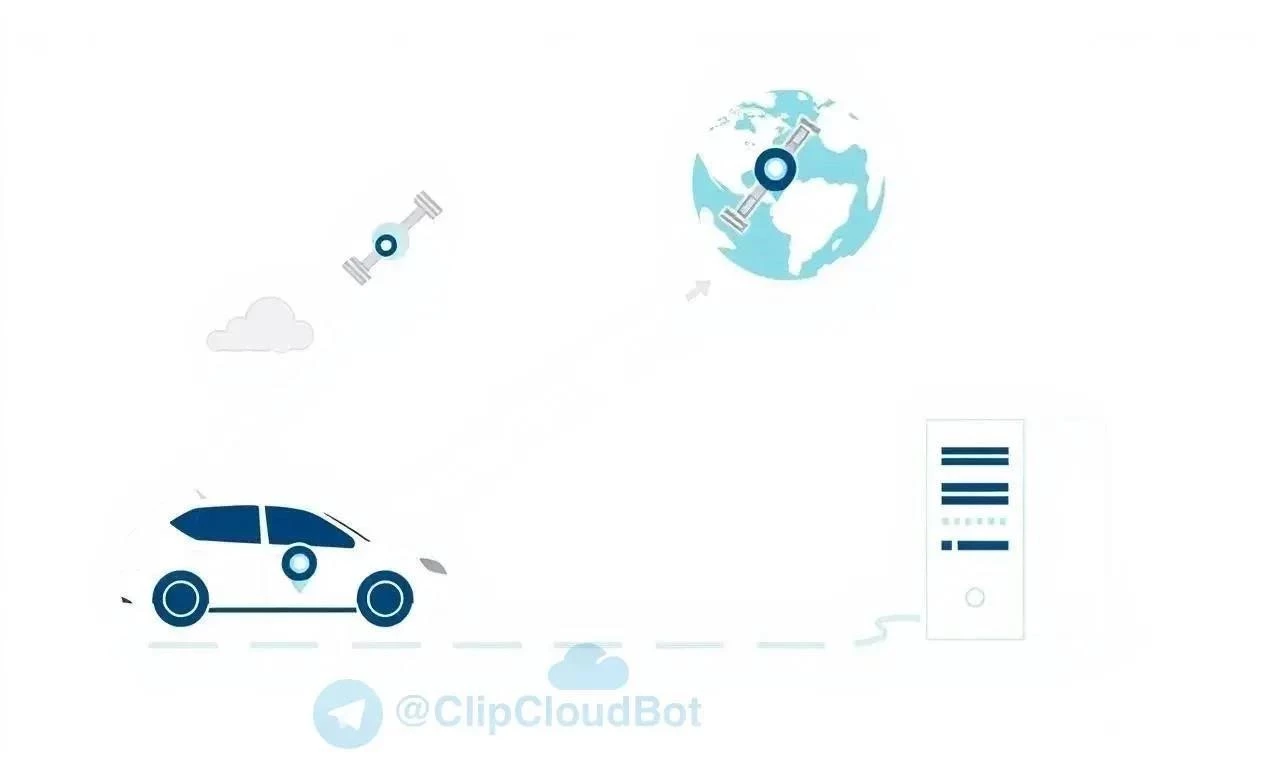
How GPS Tracking Systems Work A Comprehensive Overview
GPS tracking systems have become ubiquitous in modern life, from navigation apps on our smartphones to fleet management solutions for businesses․ But how do these systems actually work? Understanding the underlying technology can demystify the process and reveal the power behind pinpointing locations across the globe․ This article will delve into the intricacies of GPS tracking, explaining the components, processes, and applications of this essential technology․ We’ll explore everything from satellite signals to data processing, providing a comprehensive overview of how GPS tracking systems function․
Understanding the Core Components of a GPS Tracking System
A GPS tracking system relies on a network of satellites, GPS receivers, and data processing capabilities․ Each component plays a crucial role in accurately determining and transmitting location information․
- GPS Satellites: A constellation of satellites orbiting Earth, constantly transmitting signals․
- GPS Receiver: A device that receives signals from multiple GPS satellites․ This can be a dedicated GPS tracker or a smartphone․
- Data Processing: The process of calculating location based on the received satellite signals and transmitting that data to a server or user․
The Role of Satellites in GPS Tracking Accuracy
GPS satellites are the foundation of the entire system․ They orbit the Earth in a precise pattern, ensuring that a sufficient number of satellites are always within range of a GPS receiver․ Each satellite transmits a unique signal containing its position and the time the signal was sent․
How Trilateration Pinpoints Your Location
The key to GPS accuracy is a process called trilateration․ This involves the GPS receiver calculating its distance from at least four satellites․ By knowing the distance to each satellite and the satellite’s position, the receiver can pinpoint its own location in three dimensions (latitude, longitude, and altitude)․
Here’s how it works:
- The GPS receiver measures the time it takes for a signal to travel from each satellite․
- Using the speed of light, the receiver calculates the distance to each satellite․
- The receiver then uses these distances to determine its position by finding the intersection of spheres centered on each satellite․
GPS Receivers: From Smartphones to Dedicated Tracking Devices
GPS receivers come in various forms, from the chips embedded in smartphones to dedicated tracking devices designed for specific purposes․ Regardless of the form factor, all GPS receivers perform the same basic function: receiving and processing satellite signals․
Different types of GPS receivers offer varying levels of accuracy and features․ For example, some receivers are designed for high-precision applications, such as surveying, while others are optimized for low power consumption in portable devices․
Factoid: The first GPS satellite was launched in 1978․ The system wasn’t fully operational until 1995․
Data Processing and Transmission in GPS Tracking Systems
Once the GPS receiver has calculated its location, the data needs to be processed and transmitted to a server or user․ This typically involves a cellular or satellite connection․
The processed data can be used for a variety of purposes, including:
- Real-time tracking of vehicles or assets
- Navigation and route planning
- Geofencing and alerts
- Data analysis and reporting
The data is often transmitted to a central server where it can be accessed through a web interface or mobile app․ This allows users to monitor the location of their assets in real-time and generate reports on their movement․
Applications of GPS Tracking Technology Across Industries
GPS tracking technology has a wide range of applications across various industries․ Here are just a few examples:
- Transportation and Logistics: Tracking vehicles, managing fleets, and optimizing routes․
- Construction: Tracking equipment, monitoring job sites, and preventing theft․
- Agriculture: Tracking farm equipment, monitoring livestock, and optimizing irrigation․
- Personal Use: Tracking pets, monitoring children, and navigating unfamiliar areas․
Factors Affecting GPS Tracking System Accuracy and Performance
Several factors can affect the accuracy and performance of a GPS tracking system․ These include:
- Satellite Visibility: Obstructions such as buildings, trees, and mountains can block satellite signals․
- Atmospheric Conditions: Atmospheric interference can distort satellite signals․
- Receiver Quality: The quality of the GPS receiver can affect its ability to accurately process satellite signals․
- Multipath Errors: Signals bouncing off surfaces can create errors in distance calculations․
Mitigating GPS Tracking Challenges for Optimal Results
To mitigate these challenges, GPS tracking systems often incorporate additional technologies, such as assisted GPS (A-GPS) and inertial measurement units (IMUs)․ A-GPS uses cellular networks to provide initial location information, while IMUs use accelerometers and gyroscopes to track movement when satellite signals are unavailable․
FAQ: Frequently Asked Questions About GPS Tracking Systems
What is the difference between GPS and A-GPS?
GPS relies solely on satellite signals for location data․ A-GPS uses cellular networks to provide initial location information, which can speed up the time it takes to acquire a GPS fix․
Is GPS tracking legal?
Yes, GPS tracking is generally legal, but there are some restrictions․ It is important to be aware of privacy laws and regulations in your jurisdiction․
How accurate is GPS tracking?
The accuracy of GPS tracking can vary depending on several factors, but it is typically accurate to within a few meters․
Can GPS tracking be used indoors?
GPS signals are often weak or unavailable indoors․ However, some GPS tracking systems use Wi-Fi or Bluetooth beacons to provide indoor location tracking․
How much does a GPS tracking system cost?
The cost of a GPS tracking system can vary depending on the features and functionality․ Basic GPS trackers can cost as little as $50, while more advanced systems can cost several hundred dollars․
Future Trends in GPS Tracking System Technology
The field of GPS tracking is constantly evolving, driven by advancements in technology and the increasing demand for more accurate and reliable location data․ Several key trends are shaping the future of GPS tracking systems․
Integration with IoT and Sensor Technologies
One significant trend is the integration of GPS tracking with the Internet of Things (IoT) and other sensor technologies․ This allows for the collection of a wider range of data, such as temperature, humidity, and acceleration, which can be used to provide more comprehensive insights into the condition and environment of tracked assets․ For example, in the transportation of perishable goods, GPS tracking can be combined with temperature sensors to ensure that goods are maintained at the correct temperature throughout the journey․
Enhanced Accuracy with Multi-GNSS and Advanced Algorithms
Another trend is the increasing use of multi-GNSS receivers, which can receive signals from multiple satellite constellations, such as GPS, GLONASS, Galileo, and BeiDou․ This improves accuracy and reliability, especially in areas where satellite visibility is limited․ Furthermore, advanced algorithms are being developed to mitigate errors caused by atmospheric interference and multipath effects, further enhancing the accuracy of GPS tracking systems․
Miniaturization and Power Efficiency
The demand for smaller and more power-efficient GPS tracking devices is also driving innovation․ Miniaturization allows for the integration of GPS tracking into a wider range of devices, such as wearables and small assets․ Power efficiency is crucial for extending the battery life of GPS tracking devices, especially in applications where frequent battery replacements are not feasible․
The Rise of Cloud-Based GPS Tracking Platforms
Cloud-based GPS tracking platforms are becoming increasingly popular, offering a scalable and cost-effective solution for managing large fleets of tracked assets․ These platforms provide a centralized location for storing and analyzing GPS data, and they often include features such as real-time tracking, geofencing, and reporting․ Cloud-based platforms also allow for easy integration with other business systems, such as enterprise resource planning (ERP) and customer relationship management (CRM) software․
Factoid: The accuracy of civilian GPS signals is intentionally degraded by the U․S․ government through a process called Selective Availability (SA)․ SA was turned off in 2000, significantly improving the accuracy of civilian GPS receivers․
Ethical Considerations and Privacy Implications of GPS Tracking
While GPS tracking technology offers numerous benefits, it is important to consider the ethical considerations and privacy implications associated with its use․ The ability to track the location of individuals and assets raises concerns about surveillance and the potential for misuse of data․
Transparency and Consent
It is crucial to be transparent about the use of GPS tracking and to obtain consent from individuals before tracking their location․ This is especially important in the context of employee tracking, where employees should be informed about the purpose of the tracking and how their location data will be used․
Data Security and Privacy
Protecting the security and privacy of GPS data is also paramount․ GPS data should be stored securely and access should be restricted to authorized personnel․ Furthermore, data retention policies should be established to ensure that GPS data is not retained for longer than necessary․
Compliance with Regulations
Organizations that use GPS tracking technology must comply with all applicable privacy laws and regulations․ These laws vary by jurisdiction and may impose restrictions on the collection, use, and disclosure of GPS data․
In summation, the Global Positioning System (GPS) tracking system represents a sophisticated and increasingly ubiquitous technology with applications spanning a multitude of sectors․ From its foundational principles of trilateration and satellite communication to its ongoing evolution incorporating advanced algorithms and multi-GNSS capabilities, GPS tracking continues to refine its accuracy, reliability, and versatility․ The integration with IoT devices, the rise of cloud-based platforms, and the imperative for ethical considerations underscore the dynamic nature of this field․
As GPS technology progresses, its impact on logistics, transportation, security, and personal safety will undoubtedly intensify․ A comprehensive understanding of its operational mechanics, inherent limitations, and ethical implications is therefore essential for both developers and end-users alike․ By embracing innovation while adhering to principles of transparency and data protection, we can harness the full potential of GPS tracking systems to enhance efficiency, security, and overall societal well-being․
Future Research and Development in GPS Tracking
The ongoing research and development efforts in the field of GPS tracking are focused on addressing existing limitations and expanding the capabilities of the technology․ Several key areas of focus include:
- Improved Indoor Positioning: Developing techniques to enhance GPS accuracy indoors, such as using Wi-Fi fingerprinting, Bluetooth beacons, and inertial sensors․
- Quantum GPS: Exploring the potential of quantum sensors to improve GPS accuracy and resilience to jamming and spoofing․
- Enhanced Security Measures: Implementing robust security protocols to protect GPS signals from cyberattacks and ensure data integrity․
- AI-Powered Analytics: Leveraging artificial intelligence and machine learning to analyze GPS data and extract valuable insights, such as predicting traffic patterns and optimizing delivery routes․
These advancements promise to further revolutionize the way we use GPS tracking systems, enabling new applications and improving the performance of existing ones․ The future of GPS tracking is bright, with continued innovation driving the technology forward․



